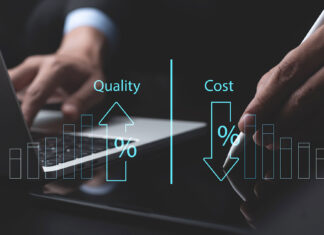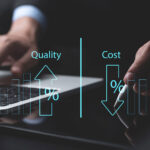Web analytics is the compass by which online enterprises navigate the vast sea of digital interactions. It is essential for optimizing web content and user experiences, thereby bolstering the performance and ROI of online businesses.
This beginner’s guide aims to impart foundational insights into the world of web analytics, aiding aspiring webmasters and entrepreneurs in harnessing the power of data to refine their online strategies.
Why Web Analytics Matters
In the digital era, web analytics is the pulse of online businesses, enabling them to make data-driven decisions that can significantly enhance user experiences and, by extension, ROI.
It transforms raw data into meaningful insights, providing a holistic view of user interactions, engagement levels, and preferences.
The amplified comprehension of user behavior enables enterprises to refine their web content, engagement strategies, marketing campaigns, and more, subsequently enhancing user satisfaction and conversion rates.
Web analytics offers the capability to tailor content and design elements based on user behavior and preferences, ensuring a user-friendly experience.
It empowers businesses to identify high-performing content and pages, enabling them to allocate resources more effectively and accentuate the aspects that resonate most with their audience.
Setting Up Your Analytics Account

Starting with web analytics involves creating an account with one of the available tools. Google Analytics is the most prevalent one, offering a comprehensive range of features and insights. However, alternatives like Adobe Analytics and Matomo offer distinct functionalities catering to diverse needs.
Setting up an account generally involves signing up, adding your website, and integrating a tracking code into your webpages.
Google Analytics offers free access, intuitive dashboards, and extensive functionalities, making it a preferred choice for beginners. It provides granular insights into user behavior, traffic sources, content performance, and more.
Adobe Analytics, on the other hand, excels in real-time analytics and segmentation, suitable for enterprises seeking advanced capabilities.
Matomo, a privacy-focused alternative, ensures data ownership and compliance, catering to businesses prioritizing user privacy.
Understanding Key Metrics
Web analytics is fueled by an array of metrics, each offering distinct insights into website performance.
Traffic denotes the volume of users visiting the site, serving as an indicator of its popularity and reach. The bounce rate represents the percentage of visitors who navigate away after viewing only one page, signaling the need for enhanced engagement strategies.
These metrics serve as the building blocks for assessing website performance, enabling businesses to discern user preferences, interaction levels, and content resonance.
They allow for the identification of areas necessitating improvement, enabling the enhancement of user experiences and content relevancy.
Navigating the Analytics Dashboard
The analytics dashboard is the nerve center of web analytics tools, presenting a plethora of information categorized into various sections. Google Analytics, for instance, segments information into Real-time, Audience, Acquisition, Behavior, and Conversions.
Each section unfolds distinct insights into user interactions, traffic sources, content performance, and conversion accomplishments.
Understanding these sections is pivotal for extracting meaningful insights. The Real-time section offers a snapshot of current user interactions, aiding in assessing the immediate impact of content updates or marketing campaigns.
The Audience section delves into user demographics, preferences, and behavior, enabling the tailoring of content and engagement strategies.
Tracking Website Traffic

Monitoring website traffic is a fundamental aspect of web analytics, offering insights into user demographics, sources, and behavior.
It enables businesses to discern the origin of their traffic, be it direct, referral, organic search, or social, facilitating the optimization of marketing strategies and resource allocation.
Measuring Conversion Goals
Conversion goals are the milestones that signify the accomplishment of desired actions by users, such as making a purchase or subscribing to a newsletter. They are pivotal for assessing the efficacy of web content and user engagement strategies.
Setting up and tracking conversion goals within analytics tools, like Google Analytics, involves defining the desired actions and monitoring their accomplishment.
It enables businesses to measure their success in engaging users and inducing the desired responses, serving as a barometer for website performance and user satisfaction.
Analyzing User Behavior
Exploring user behavior involves mapping user journeys and scrutinizing behavior flow. It enables the identification of the paths users traverse through a website, revealing the content and pages that resonate most and those that serve as exit points.
This insight allows businesses to optimize pages and content, aligning them with user preferences and interaction patterns.
Identifying pages that necessitate optimization based on user interaction data is crucial for enhancing user experiences and conversion rates. It allows for the refinement of content, design elements, and call-to-actions, ensuring their alignment with user expectations and needs.
Utilizing E-commerce Analytics

For online stores, e-commerce analytics is the gateway to understanding product performance and sales data.
It enables the monitoring of product views, additions to cart, transactions, and revenue, offering insights into user preferences, buying behavior, and conversion paths.
Analyzing e-commerce data enables online stores to optimize their product listings, prices, and promotional strategies, aligning them with user expectations and market trends.
It empowers them to accentuate high-performing products and refine those that lag, enhancing their overall sales performance and user satisfaction.
Reporting and Data Visualization
Creating meaningful reports and utilizing data visualization tools are paramount for making analytics insights accessible and understandable.
They transform raw data into coherent visuals, enabling the easy interpretation and communication of insights. Tools like Tableau and Google Data Studio are instrumental in visualizing analytics data, offering diverse options for representing information.
These tools empower businesses to create custom dashboards and reports, facilitating the monitoring of key metrics and the extraction of actionable insights.
They allow for the customization of visuals based on the audience, ensuring the effective communication of information and insights.
A/B Testing and Optimization

A/B testing is the experimentation engine of website improvement. It involves comparing two versions of a webpage to discern which performs better in inducing desired user actions.
Web analytics tools are pivotal for tracking and analyzing the results of A/B tests, offering insights into user preferences and interaction patterns.
Using analytics for A/B testing enables businesses to refine their webpages based on user responses, enhancing their engagement levels and conversion rates.
It allows for the systematic improvement of content, design elements, and call-to-actions, ensuring their resonance with user expectations and needs.



















